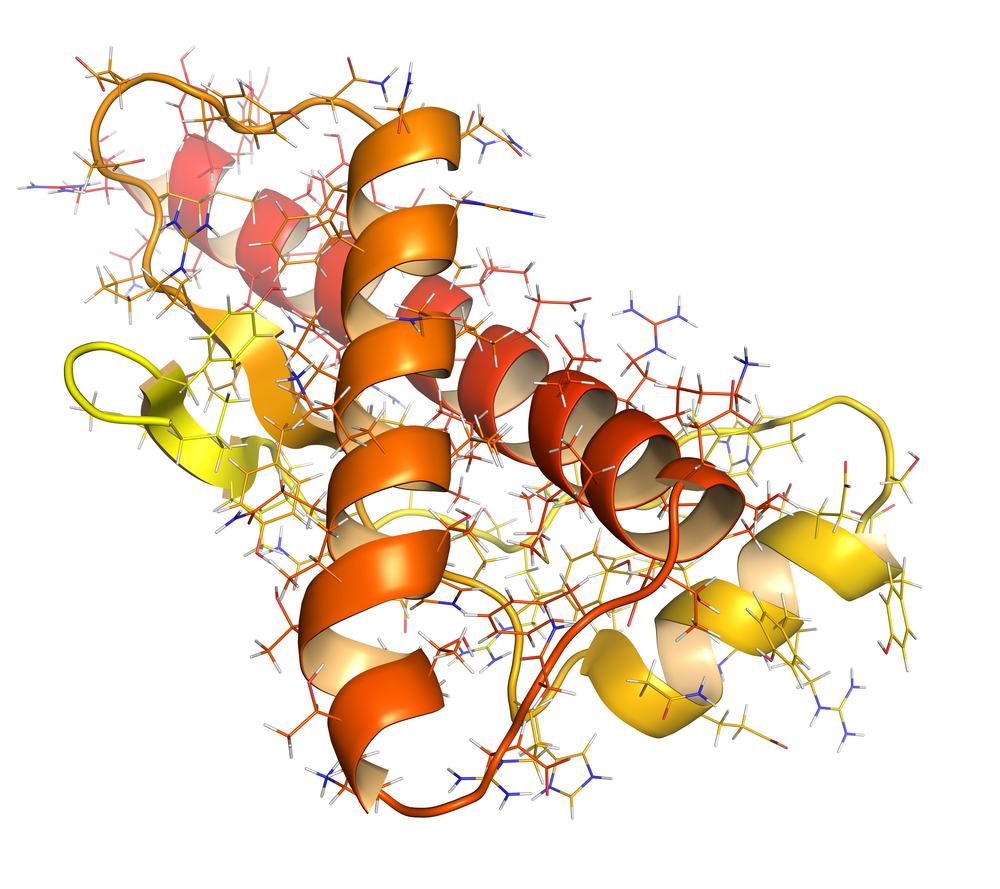Mirror-image Peptides May Lead to Longer-Lasting Therapies, Study Finds
Written by |

Mirror-image versions of existing, naturally-occurring molecules called peptides, can lead to longer-lasting therapeutics, new research shows.
For patients, including those with hypoparathyroidism, the discovery could translate into less frequent injections and possibly more therapies being developed in a pill form.
The study with those findings, “Method to generate highly stable D-amino acid analogs of bioactive helical peptides using a mirror image of the entire PDB,” was published in the journal Proceedings of the National Academy of Sciences.
Proteins are large molecules that consist of one or more long chains of peptides, and carry out an array of functions in a cell. Peptides — short molecules made up of amino acids — can make highly effective therapeutic agents as they have high specificity and high-binding affinity to their targets, in addition to low toxicity. Unfortunately, compared to other types of small molecules, very few peptides have been developed for this purpose.
One of the major reasons for this discrepancy is that peptides are highly susceptible to degradation by enzymes in the body, and are rapidly cleared away. This causes peptides to have a short lifespan, leading to reduced effectiveness.
Almost all amino acids have two forms known as the dextrorotary (D)-form or levorotary (L)-form. Interestingly, almost all naturally-occurring peptides — including the ones found in humans — are found in the L-form. That’s why human enzymes that degrade peptides tend to exclusively recognize the L-form.
This has led researchers to try to develop therapeutic peptides in the D-form. Unfortunately, the two current approaches that are used to make D-form peptides are plagued by significant limitations, leading researchers to search for other methods.
Philip Kim, PhD, at the University of Toronto took a computational approach to this problem. The Protein Data Bank (PDB) is the largest publicly available protein database, with information on 111,867 protein structures. Kim’s lab took this data and created an algorithm that flips these peptides into their D-form, called mirror-image peptides.
“Mirror image peptides are not recognized and degraded by enzymes in the stomach or bloodstream and therefore have a long-lasting effect,” Kim said in a press release.
As a proof-of-concept, researchers then looked at two specific L-form peptides that are being used as therapeutics. The first peptide was glycogen-like-peptide 1 (GLP1), which is a treatment for diabetes, and the second was parathyroid hormone (PTH), which is a treatment for hypoparathyroidism. Using their newly generated D-form database, they looked for mirror-image peptides of those most similar to GLP1 and PTH.
The matched GLP1 and PTH mirror-image peptides were then synthesized and tested for effectiveness when compared to their L-form in a laboratory setting. Both mirror-image peptides led to a similar response compared to their L-form. Importantly, the mirror-image peptides had a longer-lasting effect.
Kim’s lab is investigating whether the mirror-image peptide of PTH — D-PTH — can be delivered orally, as this would be better to avoid breakdown in the stomach.
“For frequently dosed medication, this is of great interest, as taking a pill is much easier than having an injection. This could lead to many more peptide drugs being taken as pills,” Kim said.
Peptide therapeutic agents have garnered significant interest from both academia and pharmaceutical companies recently, and are undergoing a huge expansion with continued growth expected over the next few years.
“Our work demonstrates proof of concept and leaves scope for further development into, for example, β-strand peptides, and the engineering of larger (D)-proteins. We anticipate that (D)-PDB matching will become another key tool for finding stable lead molecules in early stage drug discovery,” the researchers stated.




